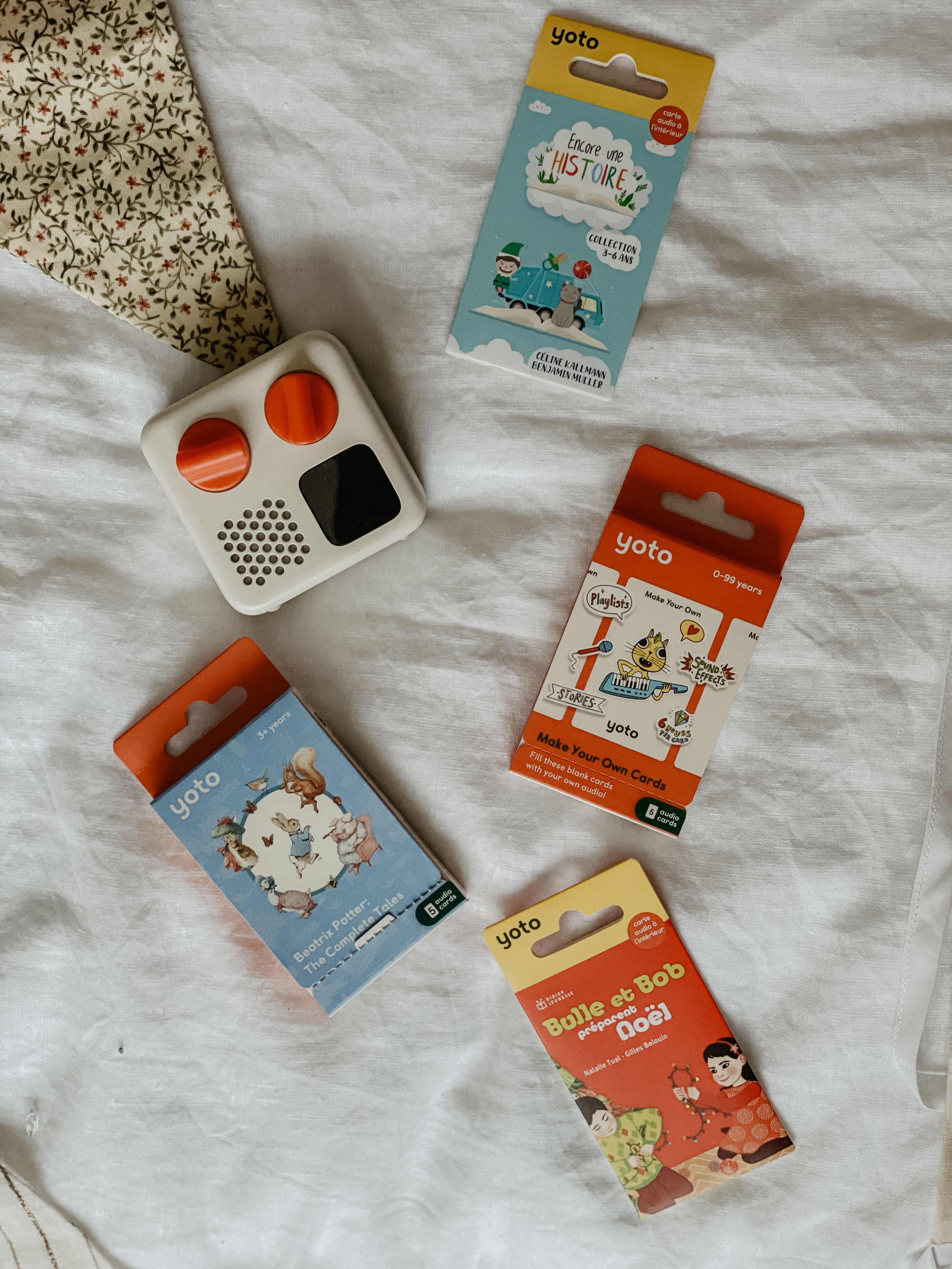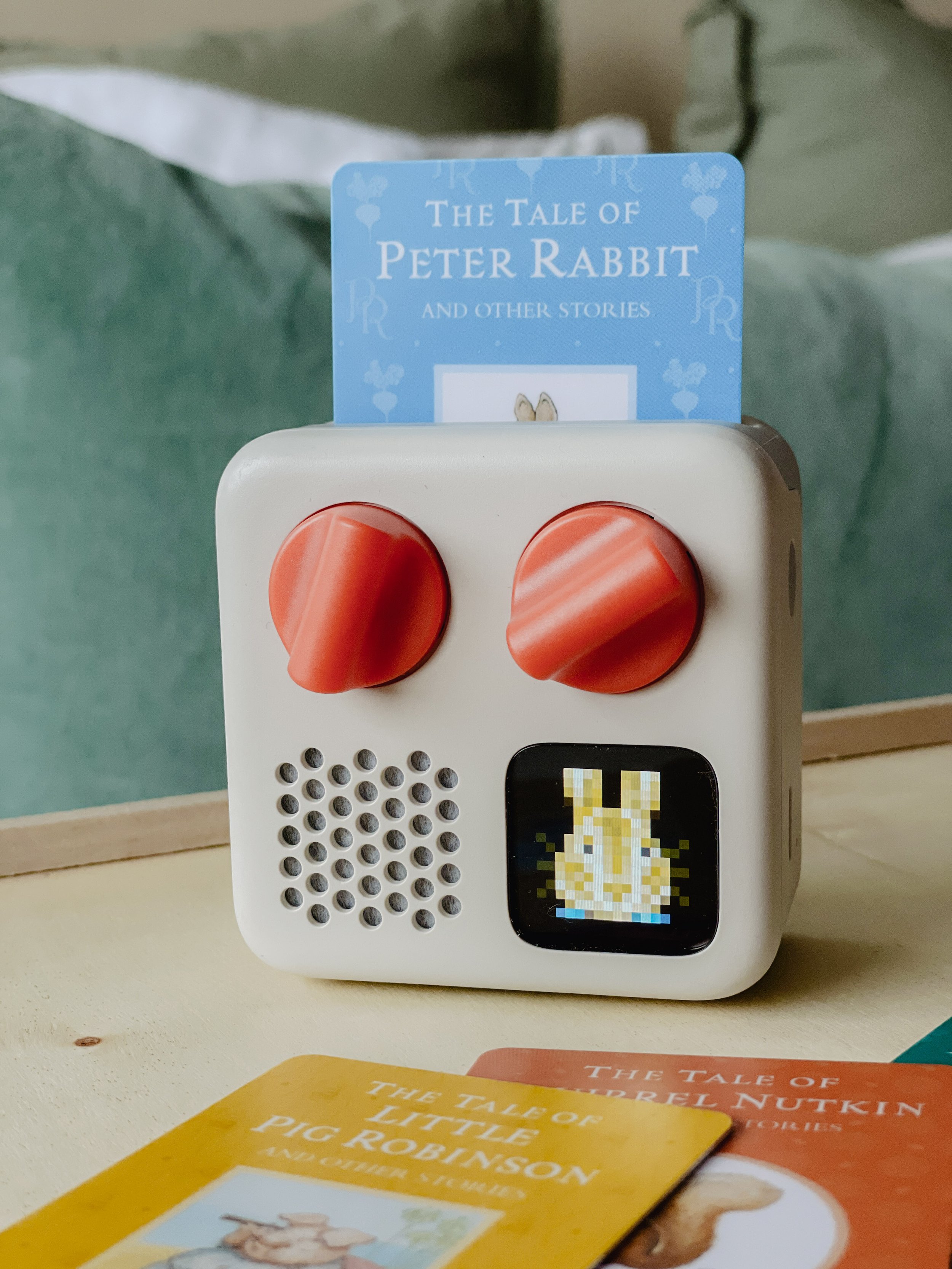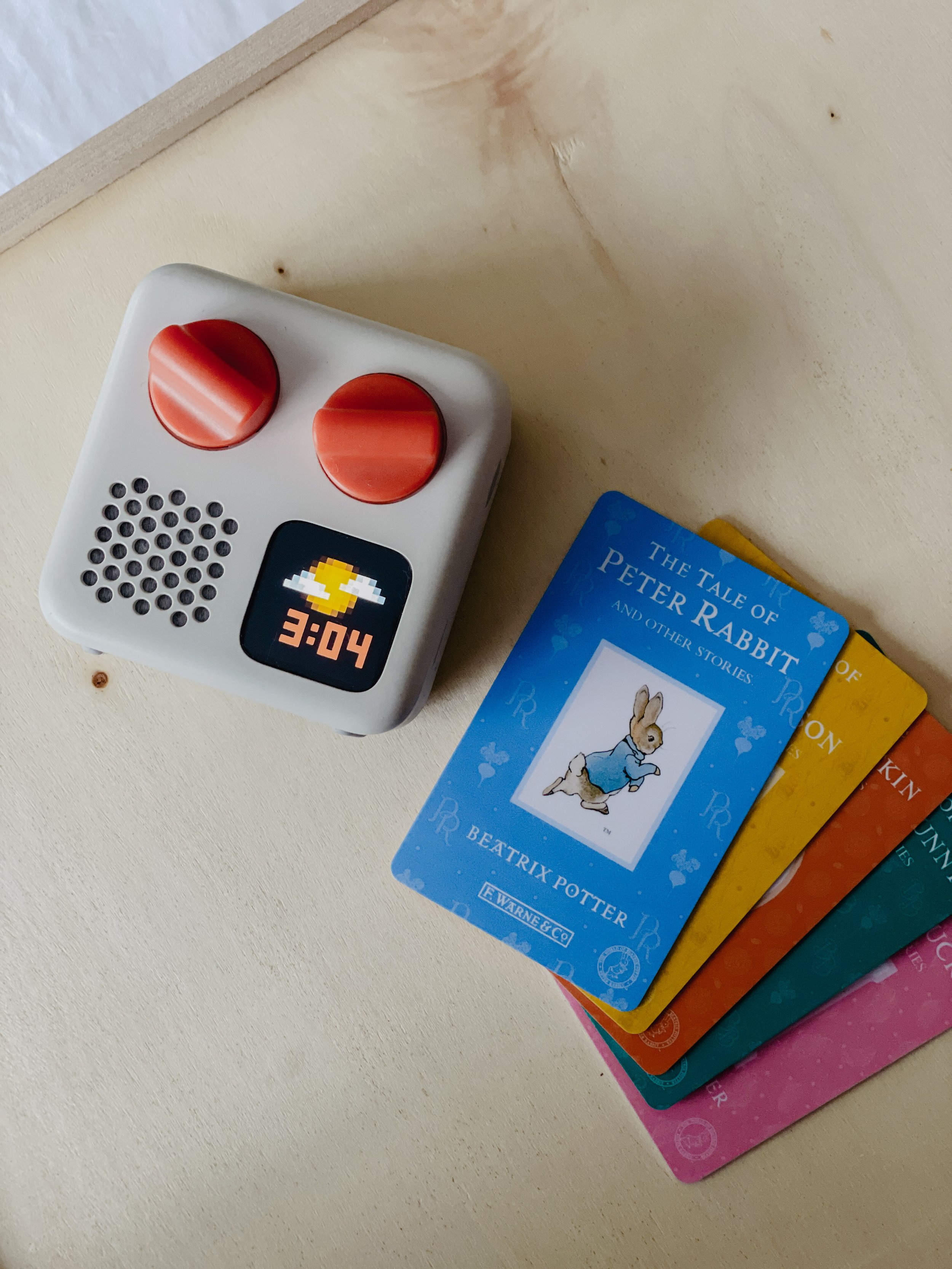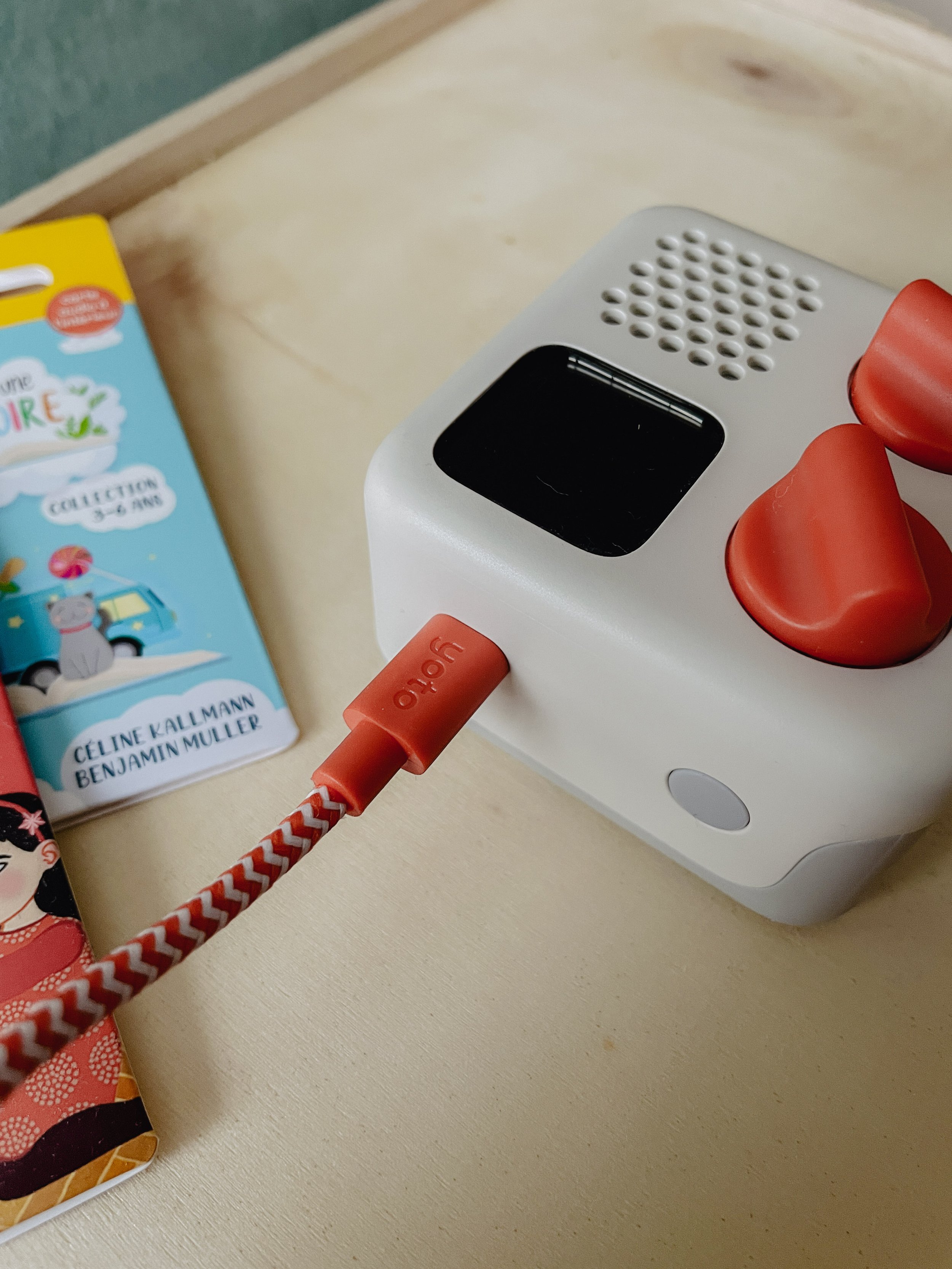Yoto Mini Review : Is this Kids' Audio Player Worth Buying?
There’s one question that I regularly ask my mum friends when we meet up - what toys are your little ones enjoying these days? Like most parents, I feel I’m constantly on the hunt for the toys that will be worth the money, that will keep my children engaged (and ideally, educated) for those moments in the day where I can’t be playing with them. Among the people I meet, there is one thing that comes up time and again as the toy most worth the money, and it’s the Yoto player.
We’ve had the original Yoto player for over a year now and it is one of the only things in our house that the children reach for every single day. The novelty hasn’t worn off, and they keep returning to it in new and fresh ways. What’s more, we’re finding it invaluable in our homeschool days - more on that later.
For all we love it, though, the original Yoto has a couple of downsides. It doesn’t have great battery life, for example, and it’s a little cumbersome if you want to travel with it. So when I saw that Yoto had launched a new mini version of their player, it seemed this might just be even better than its older cousin. Here’s how we’ve got on with this little player.
How do Yoto and Yoto Mini work?
Both the Yoto and Yoto Mini are audio players for children. They work by inserting cards, each of which plays a different audiobook, podcast or music album, into a small slot on the top of the player. It’s really easy for kids to switch what they’re listening to by taking out and putting in different cards.
The same cards are used for both Yoto and Yoto Mini, so you can use them interchangeably. Each player also has two knobs which change the volume and skip backwards and forwards through tracks. You can connect headphones if you’d like to, but the sound quality is also great if you’re playing through the built-in speakers. Wonderfully, you don’t need to be connected to WiFi for Yoto to work - the first time you load a card it will download it from WiFi, but after that it will play even without an internet connection. To protect your Yoto, there are ‘adventure jacket’ covers for both sizes.
Yoto also has a fantastic app where you can access hundreds of free podcasts and audiobooks, as well as playing any of the content you own without needing the physical card.
A Yoto player is a great way to weave stories through your days
Pros of the Yoto Mini
Versatility
Both the original Yoto and the Mini are incredibly versatile. Yoto players are great for a huge range of ages. Our 5 year old loves the radio stations and music cards, the 3 year old falls asleep to an audiobook every day, and even our 1 year old loves to lift the cards in and out!
As well as a huge range of ready-made cards, you can buy ‘Make Your Own’ cards and upload your own audio. We’ve particularly enjoyed loading up secondhand CD audiobooks we find in charity shops, along with recordings of grandparents reading their favourite books.
Portability
The original Yoto is by no means hefty, but if you want to take it on a plane or train you’ll find it takes up a fair amount of luggage space. Over the time we’ve had a Yoto, we’ve felt that long journeys are where the Yoto really shines, as little ones can listen to their choice of audiobook in the back leaving grown ups to enjoy a podcast in the front.
For this reason alone, the Yoto Mini outshines the original for us. The Mini is much easier to handle for little hands in the back of the car, and fits easily into a child-sized backpack for plane and train journeys.
Excellent battery life
The battery life on the Yoto Mini is quite a bit longer than on the full-size player, lasting around 18-20 hours. Again, this gives it a huge advantage if you do a lot of travelling, but we’ve also found it very helpful for our 3 year old who likes to have a constant hum of background music or story!
Sound quality
While the sound quality on both Yoto and Yoto Mini is excellent, I was surprised to find that the sound is slightly better on the Yoto Mini. Both are clear and easy to hear, and reach a good volume (which can thankfully also be limited in the app if needed!) But on the Yoto Mini the audio is a little crisper and it’s easier to hear speech at low volumes.
Charging cable
It may seem a little odd to rate the charging method for this little player, but for us this is one of the big improvements over the original Yoto. The full-size player has a dock style charger which, while easy to use for little ones, is quite easily broken. Perhaps it’s just our children, but we’ve gone through three chargers for the original Yoto player in under a year. Wonderfully Yoto have replaced it for free both times it has broken, but it would still be nice not to have the faff of organising a new one. The classic USB-C charging cable for the Mini is much more durable, and interchangeable with other USB-C cables that most people will have lying around.
Downsides of the Yoto Mini
The ‘screen’
Yoto is designed to reduce childrens’ screen time (which it definitely does!) but there is a screen of sorts on both the Yoto Original and the Yoto Mini. These only display a static image to show the audio you’re playing, as well as the track number of the audio you’re playing, so it’s certainly not a screen to be concerned about.
On the Yoto Mini, the screen is a little small, and it can be difficult to see what’s on the screen when you’re further away. This isn’t a huge problem, since generally I find children quite happy to get up and look closely when they need to. However, if you have a child who struggles to see over long distances or who has a physical disability, that might be worth bearing in mind.
Why We Love Yoto for Homeschooling
Here are 3 ways we love to use our Yoto to support our homeschooling. If you don’t homeschool, you’ll probably still find these ideas useful, especially if you love to encourage learning throughout your child’s day.
Audiobooks
There is a huge range of audiobooks available for the Yoto player. From Beatrix Potter to Anne of Green Gables and The Wind in the Willows, just about every classic children’s story can be found ready-made for you. Our homeschool days are filled with books and literature because we truly believe that this is the best way to learn, and Yoto is a valuable tool to continue listening throughout downtime and during evenings. It’s also a great way to support learning to read - our 5 year old loves to get out the physical book and turn the pages whilst listening to the audiobook, helping to practice word recognition and comprehension.
Language learning
We’ve begun to learn French this term, and Yoto has an incredible range of French language Yoto cards. We have the rather festive Bulle et Bob Préparent Noël as well as Encore Une Histoire, both of which have been great to have in the background as the children play or draw.
Make Your Own cards for specific subjects
Each term we study a different composer - last term it was Bach and this term, Mozart - and each time it’s been wonderful having pieces by our composer of choice on Yoto cards. It’s amazing how much little children love classical music, and having them readily available helps to immerse children in the sounds of different instruments.
Although our children are still a bit little, there are also ready-made Yoto cards for learning about other subjects that will come in handy as they grow. There are cards for history learning (like this one on the Ancient Greeks), science (like this one on anatomy) and nature (like this on Antarctica).
The Yoto Mini Player and Yoto cards featured were gifted to me for review, however all opinions are my own. This page contains affiliate links, which earn me a little bit of commission if you make a purchase, at no additional cost to you.





















